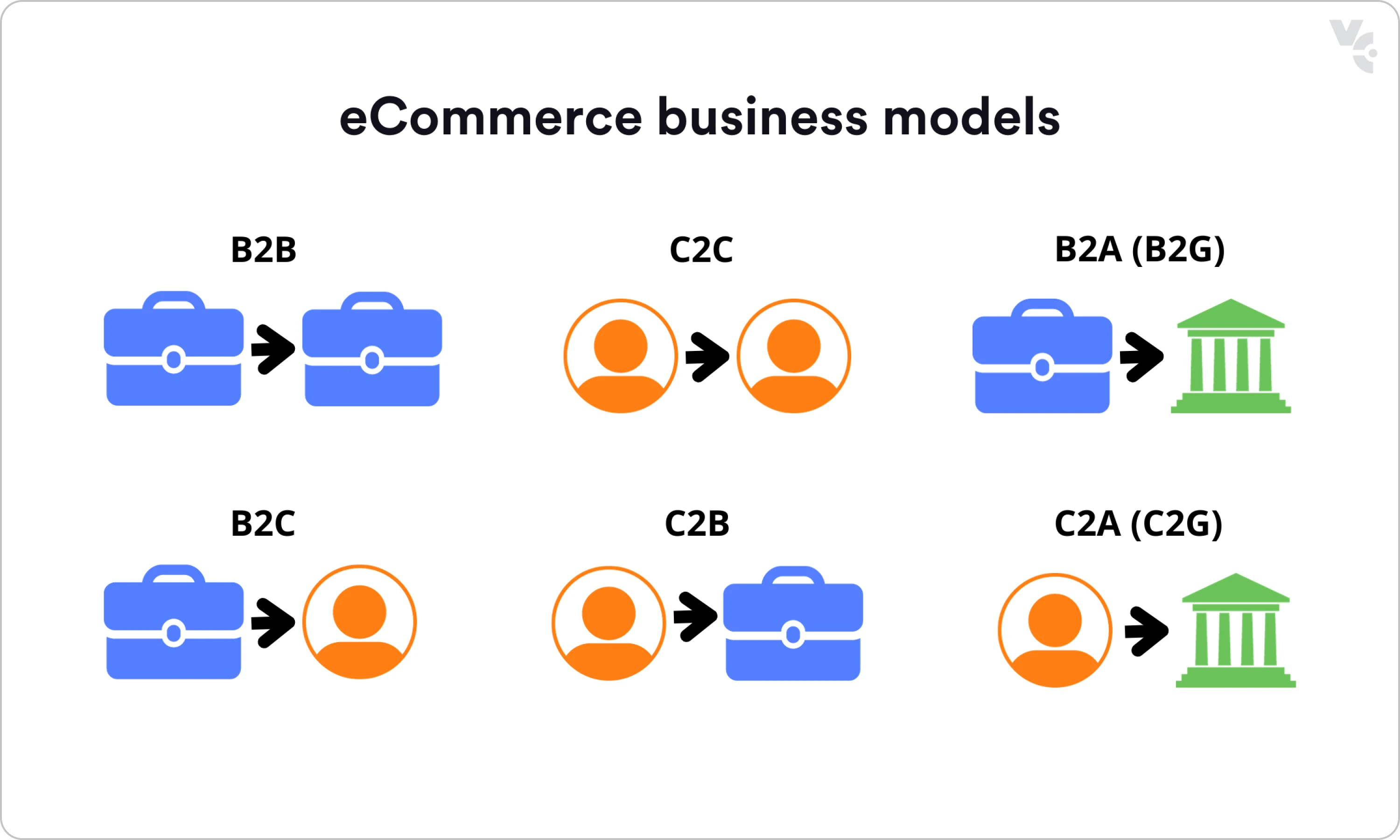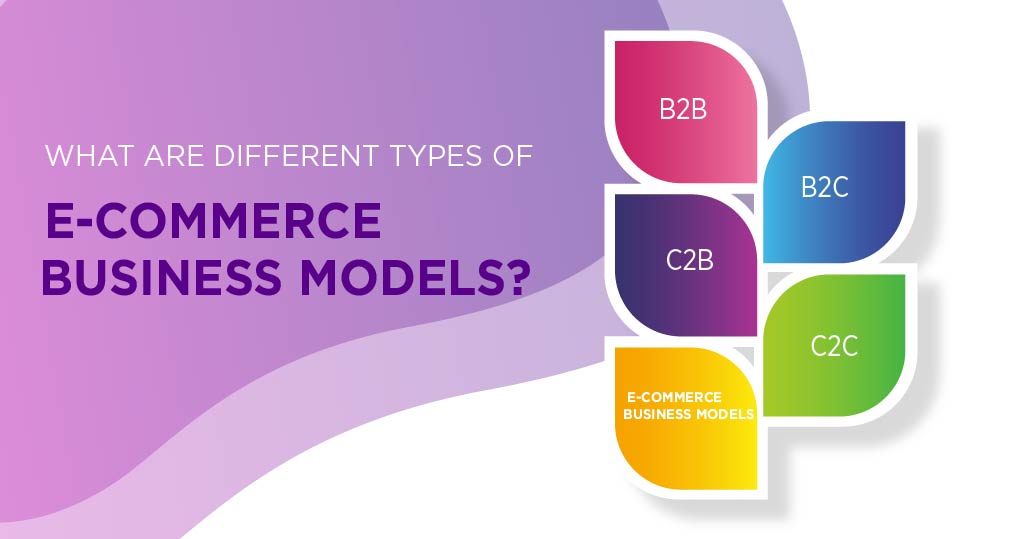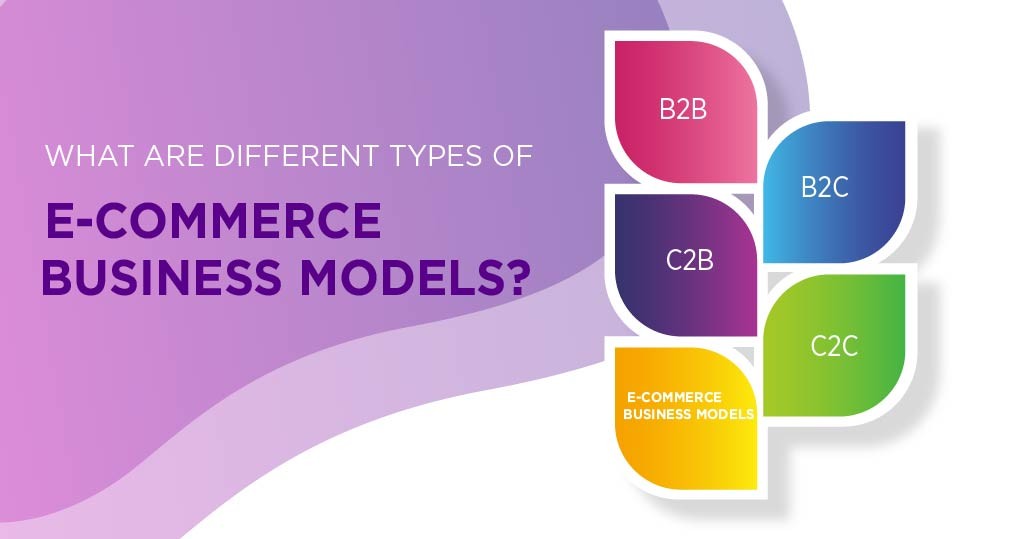E-commerce is evolving rapidly. Businesses must choose the right model to succeed.
In the world of online business, understanding e-commerce models is vital. Each model offers unique benefits and challenges. Knowing the differences can help you make better decisions. From B2B to C2C, these models shape how businesses operate online. Whether you are a startup or an established company, selecting the right model can boost your growth.
In this blog post, we will explore various e-commerce business models. You will learn how each model works and its potential advantages. This knowledge will guide you in choosing the best path for your business. Dive in to discover the different types of e-commerce business models and how they can impact your success.
Introduction To E-commerce Business Models
E-commerce has changed the way we shop and do business. It allows people to buy and sell goods or services online. Different e-commerce business models cater to various needs and markets. Understanding these models is important for anyone in the online business world. This section will cover the basics of e-commerce business models, their importance, and how they have evolved over time.
Importance Of E-commerce
E-commerce offers many advantages over traditional retail. It provides convenience to customers, who can shop from anywhere and at any time. Businesses can reach a global audience, expanding their market far beyond local boundaries. Reduced operational costs and personalized shopping experiences are other key benefits. E-commerce also allows for better data collection, helping businesses understand customer behavior and preferences.
Evolution Of Business Models
The first e-commerce websites were simple and focused on direct sales. Over time, new business models have emerged to meet the changing needs of consumers and businesses. Today, we see a variety of models, from business-to-business (B2B) and business-to-consumer (B2C) to consumer-to-consumer (C2C) and consumer-to-business (C2B). Subscription services, drop shipping, and marketplaces are also popular models. Each has its own set of features and advantages, catering to different types of businesses and customers.

Credit: www.bluecart.com
B2b (business To Business)
When it comes to e-commerce business models, B2B or Business to Business is a crucial one. This model involves transactions between two businesses, where one company sells products or services to another. Think of it as the backbone of the commercial world, where companies rely on each other for supplies, services, and resources to run their operations smoothly. Let’s dive into the key features and examples of B2B models to understand them better.
Key Features
The B2B e-commerce model comes with distinct characteristics that set it apart from other types. Here are some of the key features:
- High Volume Transactions: B2B transactions usually involve larger quantities of products, which means higher order values compared to B2C (Business to Consumer) models.
- Longer Sales Cycles: The decision-making process in B2B transactions is often more complex and takes longer, as multiple stakeholders are usually involved.
- Personalized Relationships: B2B relationships are often built on trust and require personalized service. Businesses prefer to work with suppliers they can rely on.
- Contractual Agreements: B2B transactions often involve contracts that define terms, conditions, and pricing agreements, ensuring clarity and commitment from both parties.
- Specialized Products and Services: B2B companies often offer specialized products or services tailored to the needs of other businesses.
Examples Of B2b Models
To better understand the B2B model, let’s look at some common examples:
- Manufacturers and Wholesalers: Manufacturers produce goods in large quantities and sell them to wholesalers. Wholesalers then distribute these products to retailers. For instance, a car manufacturer selling parts to a car dealership.
- Service Providers: Companies that offer specialized services to other businesses. For example, an IT firm providing software solutions to a retail company.
- Distributors and Retailers: Distributors purchase products from manufacturers and sell them to retailers. Retailers then sell these products to the end consumers. An example would be a food distributor supplying products to grocery stores.
- Consulting Firms: These firms provide expert advice to other businesses. For instance, a marketing consultancy helping a startup with its branding strategy.
- Business Software Providers: Companies that create software solutions for other businesses, such as CRM (Customer Relationship Management) systems or ERP (Enterprise Resource Planning) software.
In conclusion, the B2B e-commerce model is essential for the smooth functioning of various industries. It involves larger transactions, longer sales cycles, and personalized relationships, making it a unique and vital part of the business ecosystem. By understanding its key features and examples, businesses can better navigate this complex but rewarding landscape.
B2c (business To Consumer)
Ever bought a product online directly from a company? If yes, then you’ve experienced B2C e-commerce. B2C, or Business to Consumer, is the type of e-commerce where businesses sell products or services directly to consumers. It’s the most common model and the one most people are familiar with. Think of all the times you’ve shopped for clothes, electronics, or even groceries online. Yep, that’s B2C at work!
Key Features
B2C e-commerce has some distinct features that set it apart from other models. Here are a few:
- Direct Sales: Companies sell directly to consumers, cutting out any middlemen.
- Wide Reach: Businesses can reach a global audience, not just local customers.
- Convenience: Consumers can shop anytime, anywhere, making it super convenient.
- Variety: A wide range of products and services are available to choose from.
- Personalization: Companies often tailor their offerings based on consumer preferences and behavior.
Examples Of B2c Models
Let’s dive into some real-world examples to better understand B2C models:
- Online Retailers: Think Amazon or Walmart. These giants offer a vast array of products directly to consumers through their websites.
- Subscription Services: Ever heard of Netflix or Spotify? These companies offer subscription-based services directly to consumers.
- Direct Manufacturers: Companies like Apple sell their products directly to consumers via their online stores.
B2C e-commerce is all about making life easier for consumers. Whether you’re buying a new phone, streaming a movie, or ordering dinner, B2C businesses are there to serve you directly. Isn’t that handy?

Credit: virtocommerce.com
C2c (consumer To Consumer)
C2C (Consumer to Consumer) e-commerce is a model where individuals sell products or services directly to other individuals. This model leverages online platforms to connect buyers with sellers. It has grown in popularity due to its simplicity and the ability to reach a global audience. In a C2C environment, consumers can easily find unique products and often at lower prices. The absence of intermediaries makes transactions more straightforward. Let’s dive deeper into the key features and examples of C2C models.
Key Features
C2C platforms typically have low entry barriers. Anyone can list items for sale. They often provide a rating or review system. This builds trust among users. C2C platforms usually offer user-friendly interfaces. This makes it easy for consumers to navigate and complete transactions. Payment systems are often integrated. This ensures secure and smooth financial transactions. Lastly, C2C platforms may offer dispute resolution services. This helps in handling conflicts between buyers and sellers.
Examples Of C2c Models
One popular example is eBay. It allows users to auction or sell items directly. Craigslist is another well-known C2C platform. It enables users to post classified ads for goods and services. Etsy is a favorite for handmade and vintage items. It connects artisans with buyers looking for unique products. Depop is a mobile app popular among younger generations. It focuses on fashion and allows users to buy and sell clothing. Lastly, Facebook Marketplace is widely used for local buying and selling. It leverages the social network to connect buyers and sellers.
C2b (consumer To Business)
The C2B (Consumer to Business) model flips the traditional business model. Consumers offer products or services to businesses. This model has grown with the internet and digital platforms. It benefits both consumers and businesses by creating unique opportunities.
Key Features
In the C2B model, consumers drive the transaction. They offer value to businesses. This value can come in the form of services, products, or feedback. Businesses benefit by getting direct access to consumer expertise or resources.
One key feature is consumer empowerment. Consumers have more control over the transaction. They set the terms and conditions. Another feature is the use of digital platforms. These platforms connect consumers with businesses easily.
Flexibility is another feature. Consumers can offer their services or products on a freelance or ad-hoc basis. This flexibility attracts many individuals to the C2B model.
Examples Of C2b Models
Several platforms showcase the C2B model effectively. One example is freelance websites. Platforms like Upwork and Fiverr allow consumers to offer their services to businesses. Businesses can hire freelancers for specific tasks or projects.
Another example is review and survey platforms. Websites like SurveyMonkey or Yelp allow consumers to provide valuable feedback. Businesses use this feedback to improve their products or services.
Bloggers and influencers also fit the C2B model. They create content and promote products to their audience. Businesses pay them for sponsored posts or advertisements.
Stock photo websites are another example. Photographers upload their photos. Businesses then purchase these photos for their marketing or content needs.
The C2B model continues to grow. It offers unique opportunities for both consumers and businesses. Its flexibility and digital nature make it a popular choice.
B2g (business To Government)
When exploring the various types of e-commerce business models, one must not overlook the B2G (Business to Government) model. This model is where businesses provide products and services to government entities. Unlike other models, B2G involves unique processes and requirements, making it an interesting area to delve into. So, what makes B2G stand out?
Key Features
B2G e-commerce comes with its own set of distinctive features. Here are some of the key aspects:
- Regulated Procedures: Governments have strict regulations and guidelines for procurement, ensuring transparency and fairness.
- Large Contracts: Contracts in B2G can be substantial, often involving large sums of money and extensive projects.
- Competitive Bidding: Businesses must often go through a competitive bidding process to win government contracts.
- Long Sales Cycles: The sales cycles in B2G can be lengthy due to the detailed evaluation and approval processes.
- Reliable Payments: Payments from government contracts are typically secure and reliable, although they might follow strict payment schedules.
Examples Of B2g Models
To better understand how B2G works, let’s look at some real-world examples:
- IT and Technology Services: Companies like IBM and Oracle frequently provide software and IT services to various government agencies, enhancing their operational efficiency.
- Construction and Infrastructure: Businesses such as Bechtel and Fluor secure government contracts to build highways, bridges, and public facilities, playing a crucial role in national development.
- Healthcare Providers: Pharmaceutical companies and medical equipment suppliers often enter into agreements to supply vaccines, medications, and health technologies to public health institutions.
- Defense Contractors: Firms like Lockheed Martin and Raytheon are heavily involved in providing defense equipment and services, ensuring national security.
In conclusion, the B2G model offers a unique blend of challenges and opportunities. It involves working with a very structured and regulated customer – the government. While the processes can be rigorous, the rewards are often worthwhile. So, if your business can meet the stringent requirements, B2G could be a lucrative avenue to explore.
G2b (government To Business)
G2B (Government to Business) e-commerce models involve transactions between government agencies and private businesses. Governments use online platforms to provide services and information to businesses. This model helps streamline processes and reduce paperwork for businesses.
Key Features
One key feature of G2B is online tax filing. Businesses can file taxes directly through government portals. This saves time and ensures accuracy. Another feature is the provision of business licenses. Companies can apply for and renew licenses online. This simplifies regulatory compliance.
Government contracts are also a part of G2B. Businesses can bid for government projects through digital platforms. This opens opportunities for companies to work on public projects. Governments provide various training programs for businesses. These are accessible through online platforms, enhancing business skills and compliance knowledge.
Examples Of G2b Models
One example is the U.S. Small Business Administration website. It offers resources and tools for small businesses. The UK Government’s GOV.UK platform is another. It provides services like tax filing and business registration. The European Union has the EU Business Register. This helps businesses find information about other companies across Europe.
In India, the Government e-Marketplace (GeM) allows businesses to sell goods and services to government departments. It is a transparent and efficient procurement system. These examples show how G2B models can benefit both governments and businesses.
Future Trends In E-commerce
The e-commerce industry is constantly evolving. New trends are shaping the future of online business. These trends impact how businesses operate and interact with customers. Let’s explore these future trends.
Emerging Technologies
Emerging technologies play a key role in e-commerce. Artificial Intelligence (AI) helps in personalizing shopping experiences. It predicts what customers might like. AI chatbots assist with customer service, providing instant answers. Another technology is Augmented Reality (AR). AR allows customers to visualize products in their own space. This enhances their shopping experience. Blockchain technology ensures secure transactions. It helps in building trust with customers. Lastly, 5G technology offers faster internet speeds. This improves the overall user experience on e-commerce sites.
Impact On Business Models
These technologies impact e-commerce business models. AI helps in inventory management. It predicts stock needs and reduces wastage. AR reduces return rates. Customers make more informed decisions before buying. Blockchain increases transparency in transactions. It builds customer confidence in the brand. Faster internet speeds mean quicker load times. This keeps customers engaged and reduces bounce rates. Businesses must adapt to these technologies. They need to stay competitive and meet customer expectations.

Credit: www.builderfly.com
Frequently Asked Questions
What Are The 4 Types Of E-commerce Business Models?
The four types of e-commerce business models are Business to Consumer (B2C), Business to Business (B2B), Consumer to Consumer (C2C), and Consumer to Business (C2B). Each model serves different market needs and operates distinctively.
What Are 6 Most Popular Forms Or Models Of E-commerce?
The 6 most popular e-commerce models are B2B, B2C, C2C, C2B, B2G, and G2B. Each model caters to different business needs and customer interactions.
What Is B2c, B2b, C2c, And Examples?
B2C (Business to Consumer) involves businesses selling to individuals, like Amazon. B2B (Business to Business) involves businesses selling to other businesses, like IBM. C2C (Consumer to Consumer) involves individuals selling to other individuals, like eBay.
What Are The Seven Major Types Of E-commerce?
The seven major types of e-commerce are B2B, B2C, C2C, C2B, B2A, C2A, and D2C. These categories define the different ways businesses and consumers interact online.
Conclusion
E-commerce business models offer many opportunities. Choose one that fits your goals. Each model has its own strengths. Understand your market and customers well. Plan carefully and adapt to changes. Stay updated with trends and technology. Success comes with knowledge and flexibility.
Start small, learn, and grow. Your e-commerce journey begins now.

